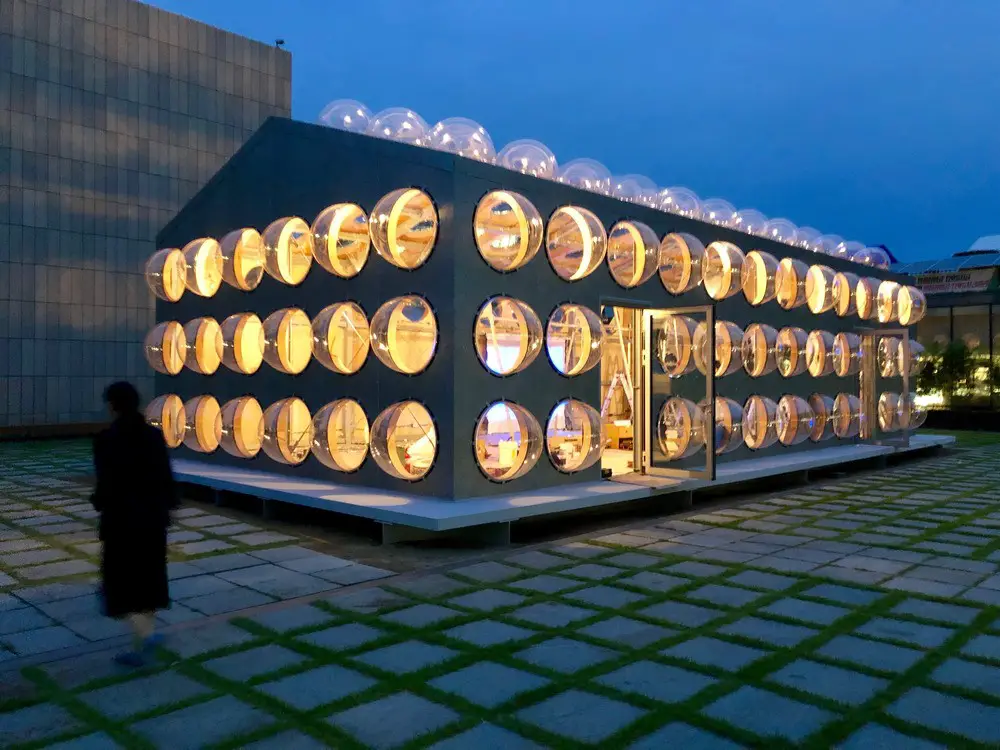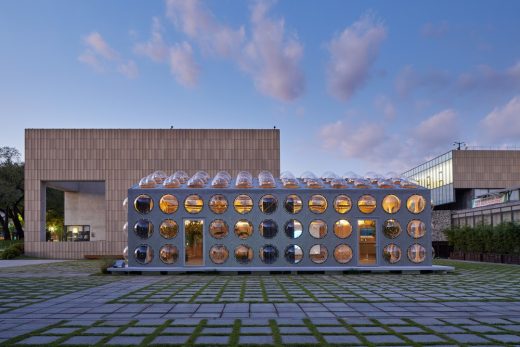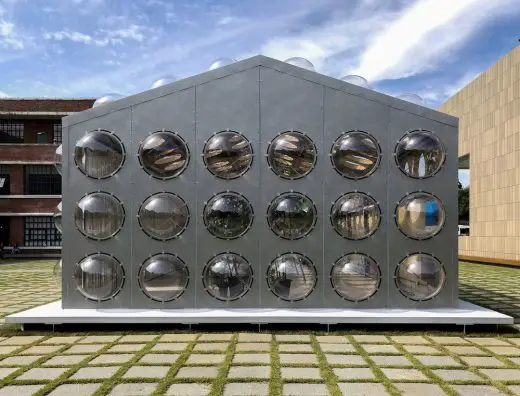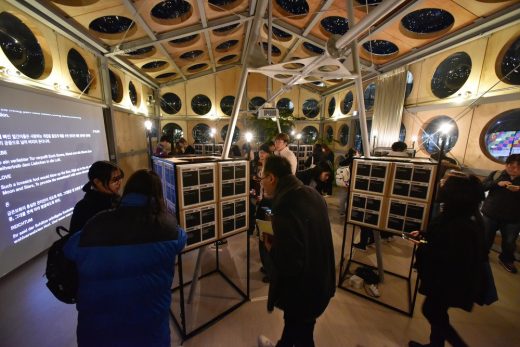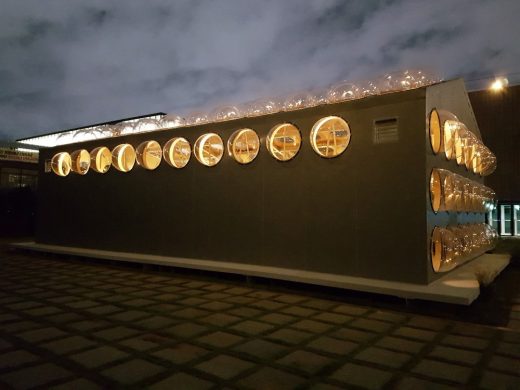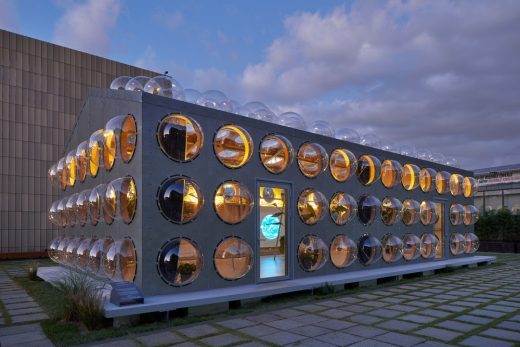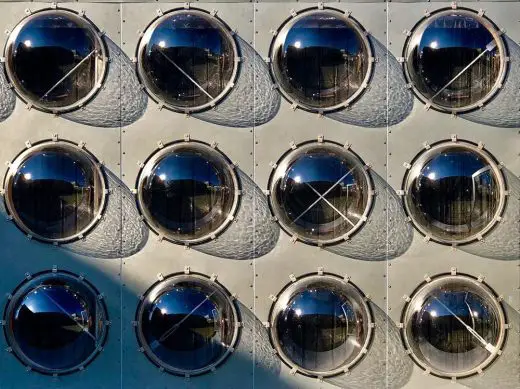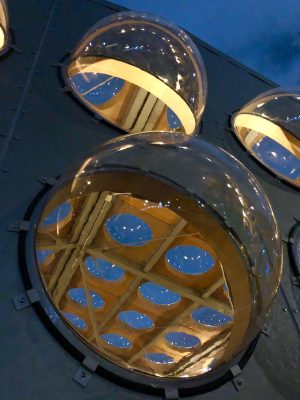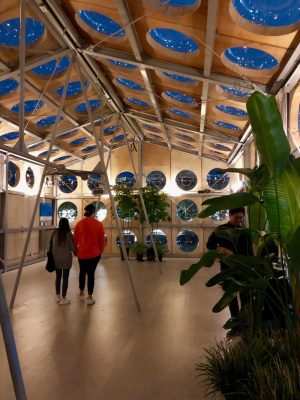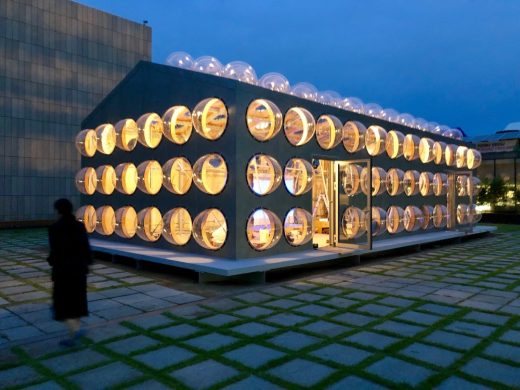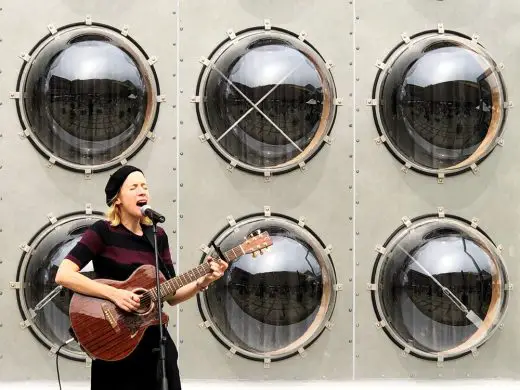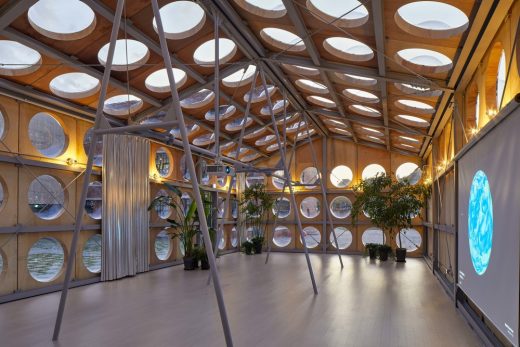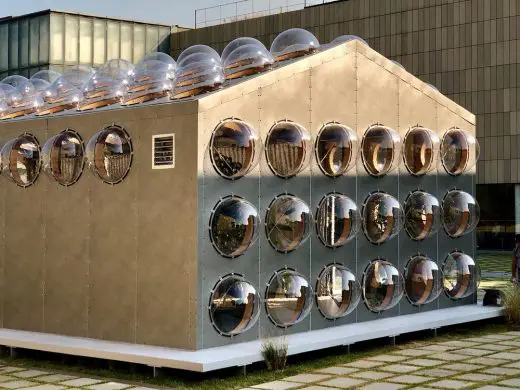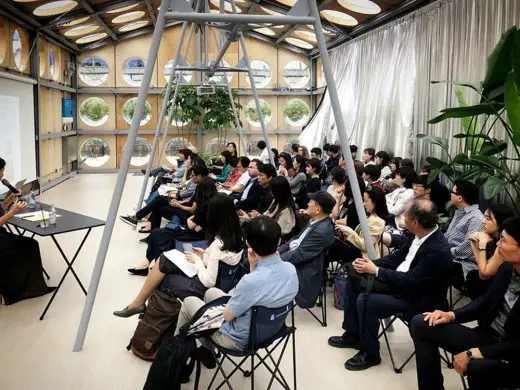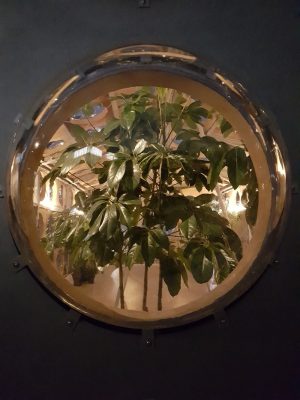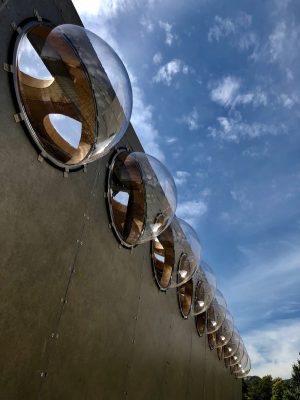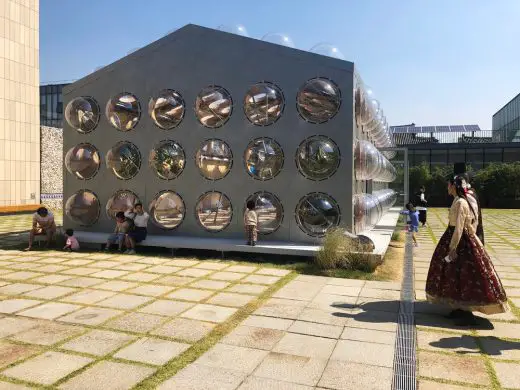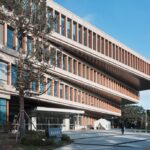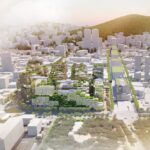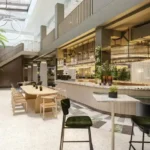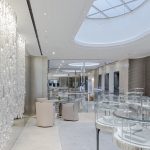Perpetual Spring, The Climate-Correcting Machine, South Korea 1Interior, Architecture Project Images
Perpetual Spring, The Climate-Correcting Machine in Seoul
20 Dec 2022
Designers: Obra Architects
Location: Seoul, South Korea
Photos by Obra Architects
Perpetual Spring, South Korea
Perpetual Spring, The Climate-Correcting Machine, Wins Architecture MasterPrize 2022 Best of Best in Exhibition
Perpetual Spring, The Climate-Correcting Machine, a project commissioned by the Museum of Modern and Contemporary Art Seoul, located in the heart of downtown Seoul, has received the Architecture MasterPrize™ (AMP) honoring international designs in various disciplines of architecture. Each submitted design in the competition was evaluated by an esteemed AMP Jury. Perpetual Spring, designed by Obra Architects, was recognized as Best of Best in the Exhibition category, as well as in the Public Space category.
Opened to the public in September 2020, the Perpetual Spring pavilion served as a featured work in the centennial exhibition “Architecture and Heritage: Unearthing Future”, aiming to connect outdoor spaces at the heart of the city’s center and to provide a platform for commissioned architects to reflect upon Seoul’s modern heritage, while highlighting issues facing urban life in today’s world and its future.
Perpetual Spring was commissioned for the exhibition “Architecture and Heritage: Unearthing Future” with two main objectives: 1). To awaken dormant public consciousness to the potential of social activism and political agency, and 2). to explore the possibilities of an alternative technology that could, by virtue of collective ownership, become an agent for the resolution of problems affecting us all through the vehicle of radical public participation. The Perpetual Spring pavilion project is a demonstration, and a chance to focus public attention on issues of the city, climate change, the environment, and the future. Designed to be on display and in use in the public courtyard of one of the most-frequented and visible institutions in the city of Seoul, its placement positioned the project for the widest reach and greatest social impact of its message. The pavilion was disassembled in May 2020 after the closing of the exhibition. It is scheduled for further development and reopening as the public space venue in a model urban agritech community currently in development in Jincheon, approximately two hours outside of Seoul.
Founded on the idea that creating a true space of free public expression is already a radical way of questioning the ways in which the city is reproduced and expanded today, the “Climate-Correcting Machine” presented both a platform for awareness and an invitation to action. By maintaining spring weather inside the pavilion, the work aspired to perpetuate the climatic condition propitious to progressive movements for a free and just society; spring has become a poetic expression in human history as referred to in the Spring of Nations, the Prague Spring, the Arab Spring, etc. For seven months, between September 2019 to April 2020, at the Museum of Modern and Contemporary Art MMCA Seoul, Perpetual Spring was the site of an urban experiment on social interaction and community organization.
Offering a place of comfort during days of severe weather, it featured a free open-access venue for public use: public lectures, poetry readings, theater, music, discussion groups of all kinds, book club sessions, etc. Also featured were talks on issues related to the intersection between the emergency global climate crisis and prospects for the unlikely rise of authentic democratic rule and universal justice. Anyone interested was invited to sign up online to use the space during open museum hours at www.perpetualspring.org, a website that featured real-time freezeframe viewing of the urban public space and pavilion.
The signup process was free and open, and over 30 events were individually organized by volunteer participants and held in the space, including three indie music concerts, poetry reading, a Slow Futures Lab education workshop, 13th Gwangju Biennale talks, experimental film viewings, dialogues on North Korea, as well as FutureSchool organizational meetings before the museum was shut down due to COVID.
Pablo Castro, FAIA, co-founder of Obra Architects, describes the project intent: “That a revolution prefers fair weather is an assertion that can be historically attested, first with the Spring of Nations, the Prague Spring and, more recently, the Arab Spring. Perpetual Spring is an installation that aspires to artificially perpetuate, into fall and winter, climatic conditions propitious to progressive social change, artificially creating a climate for human interaction, community organization, and the debate of ideas: clear skies, pleasant temperatures, and abundant flowering greenery. Perpetual Spring is a work of optimism, posing that the current weather crisis affecting the planet does not have to inevitably end in catastrophic global disaster if we organize to take rational care of the planet, our shared home.”
And so it is by way of a machine that we can then attempt to prefigure both, some kind of future and its denial at the same time. If the prevalent economic system has provided storage of the efforts of the many for the benefit of the few, the machine is both empowerment and substitute of human agency towards the transformation of the world into a home. It should come as no surprise then, that the anticipated fundamental presence in the coming city of impersonalized artificial intelligence is still that of the machine.
The unfulfilled promise of modernity in general, and of the Modern Movement in architecture in particular, is that of finally gaining control over the time of our lives, freedom from labor and the possibility to pursue our self-realization and finally attempt to become who we really should have been. The machine is the preeminent tool in that struggle. Perpetual Spring is then intended as both concrete and abstract machine, as a place where the very real parameters of a weather gone awry can be rudimentarily tweaked both as modest example and proposed symbolic ritual, and as the repository collective efforts towards a meta-technology: if the rightful ownership of people’s machines has been confiscated in obsessive fixation with individualism—the antidote for fear—, new machines shall be invented through a popular effort towards an alternative technology.
—Obra Architects, 20 of August 2019, New York
The Perpetual Spring Pavilion served as a one-of-a-kind prototype showcasing the functional aspects of urban community gathering: a building as an artificially-controlled greenhouse machine to address and bring attention to a pressing global issue of our time: climate change. Combining form and destination with function, the Pavilion was proposed as a “climate-correcting machine,” both a platform for awareness and an invitation to action.
As if it were the head of some giant insect, the Perpetual Spring Pavilion will be outfitted with 150 “eyes,” each a 90-cm diameter polycarbonate plastic semi-sphere. These crystalline luminous “eyes” bulge out of the pavilion’s otherwise dull metallic mass as if compelled to expand by an overwhelmingly strong internal force. Ambiguously, they separate interior and exterior, while generously allowing into the space the sunshine that contributed towards keeping the space warm during the cold days of fall and winter.
Adding the equipment necessary for the assemblage of an artificial climate-correcting machine, the Pavilion was outfitted with a variable climate control system including photovoltaic panels on the museum’s nearby roof. These panels powered automatic exhaust fans, aluminum foil curtains and a phase-change radiant floor-heating system in order to stabilize and balance temperatures inside the space and preserve permanent spring weather-like conditions with a small garden growing inside the Pavilion. Audio-visual displays informed visitors in real time about climatic and environmental data on a global scale, including projection of www.earth.nullschool.net, an interactive animated map of current wind, weather, ocean, and pollution conditions, as forecast by supercomputers, updated every three hours, courtesy of the artist, which was viewable every evening inside “The Climate-Correcting Machine.”
Originally scheduled for exhibit from September to March 2020, the pavilion events were prematurely suspended in February due to COVID but the physical space remained open thanks to popular appeal, with an extension of viewing until May 2020, when it was disassembled after exhibition close. Figuring as a photozone opportunity, the site remained open to the public with participation encouraged on social media at https://www.instagram.com/perpetualspringspace. The project is scheduled for further development and reopening as the public space venue in a model urban agritech community currently in development in Jincheon, approximately two hours outside of Seoul.
The Climate-Correcting Machine in Seoul, South Korea – Building Information
Design: Obra Architects – http://www.obraarchitects.com/
Design Team
Obra Architects: Pablo Castro, Jennifer Lee, Jinkyung Cho, Lianyuan Ye, Margherita Tommasi, Danchu Cho, Yifan Deng, Alejandra Ahrend, Ruby Kang, Song Gan
Front Inc.: Michael Ra, Hwan Kim www.frontinc.com
Obra Abim: Hojoong Kim, Anna Na www.obraabim.com
Moohan Global: Sang Jun Kim www.moohanglobal.co.kr
Mahadev Raman, Arup, Princeton University
Dongsimwon Landscape & Design Construction Co.: Gye Dong Ahn, Namjin Lee www.dongsimwon.com
Supermass Studio: Taewook Cha www.supermassstudio.com
Alan Woo: www.alanwoo.ca
O-un: www.o-un.kr
Other
Professor Alex Taek-Gwang Lee, Kyunghee University 이택광 교수, 경희대학교
Professor Sebastian Seung, Princeton University, Samsung NY AI Lab승현준교수, 프린스턴 대학교
Cameron Beccario: earth.nullschool.net
Sangam Lee, Namhyundang Guesthouse
Special thanks to:
CJ Foundation
Dongkuk Steel
Eagon
Gami Designlab, Ougun Jung감이디자인랩 정우건
Global Green Growth Institute
Green Drinks Seoul
Hanwha Q Cells
Hyunji Industry Co., Ltd., Junyoung Lee 현지산업 이준영
Sammyung Tech
SeAH Steel
Shawoo Studio, Changwook Pak샤우 디자인 사무소 박창욱
And to the following individuals:
Christel Adamou
Orestes Anastasia
Charles Busada
Insouk Cho 조인숙
Theresa Cho & Andrew Yi
Catherine Germier
Justine Harris & Jack Youngelson
Tracey Hummer
David Karlin
Li Ke
Wonsook Kim & Thomas Clement
Ahyeon Lee 이아연
Ali Kim & Haeseung Lee
Jisoo & Chongdoo Lee
Sunghee Moon
Heyonn & Stephane Mot
Dietmar Offenhuber
Helen Park
Tim Partridge
Peter Simmonds
Michele & Jose Torrecilla
Sooryun Youn
About Obra Architects
Obra Architects is an architectural design and planning firm working on projects of urban and community impact that create socially sustainable design environments. Work includes housing prototypes, public space initiatives, urban planning, aging-in-place residential projects, educational projects such as schools and kindergartens, and incorporation of energy efficiency and renewable energy alternatives in design and project execution, with LEED AP professional staff and FAIA Fellow of the American Institute of Architects principal leadership.
Obra is a minority woman-owned business enterprise, supporting local and international community-minded clients and institutional level initiatives in work and practice, with projects all over the world, including Argentina, China, Korea, Italy, and the US. The firm is actively entrepreneurial and operates to try to change the way architecture impacts communities and environments. At the same time, the work aims to originate from a pragmatism and realism that harnesses local energies and international inspired clients/institutions seeking change through architecture, design, and urban planning.
Photographer: Obra Architects
Perpetual Spring, The Climate-Correcting Machine in Seoul images / information received 201222 from Obra Architects
Location: Seoul, South Korea
South Korea Architecture Designs
Contemporary South Korean Architectural Selection
South Korean Architecture Designs – chronological list
Design: OMA
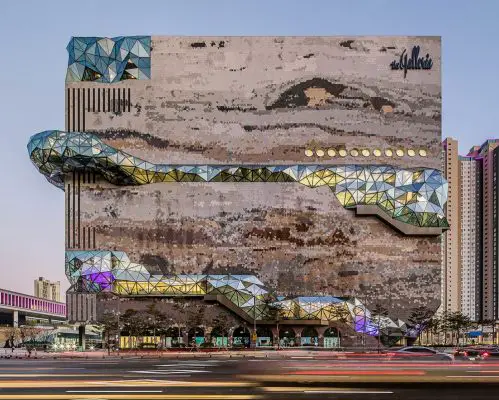
Photography by Hong Sung Jun, courtesy of OMA
Galleria Department Store in Gwanggyo
Design: Foster + Partners, UK
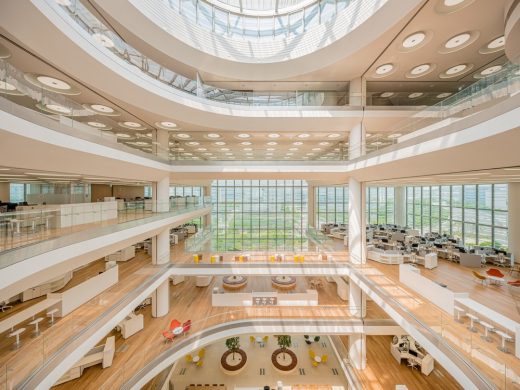
photo : TIME OF BLUE
Hankook Technoplex in Pangyo
Design: ATELIER BRÜCKNER
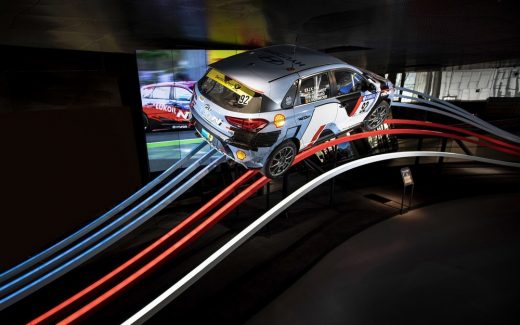
image courtesy of architects office
Hyundai Motorstudio in Goyang Korea
Architects: ATELIER BRÜCKNER
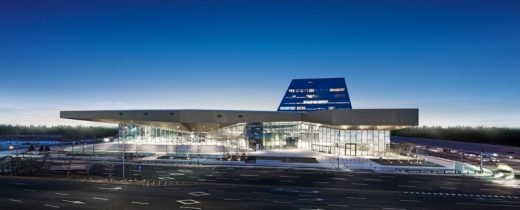
image from architecture office
Hyundai Motorstudio in Goyang
South Korean Architecture News
Comments / photos for the Perpetual Spring, The Climate-Correcting Machine in Seoul designed by Obra Architects page welcome

